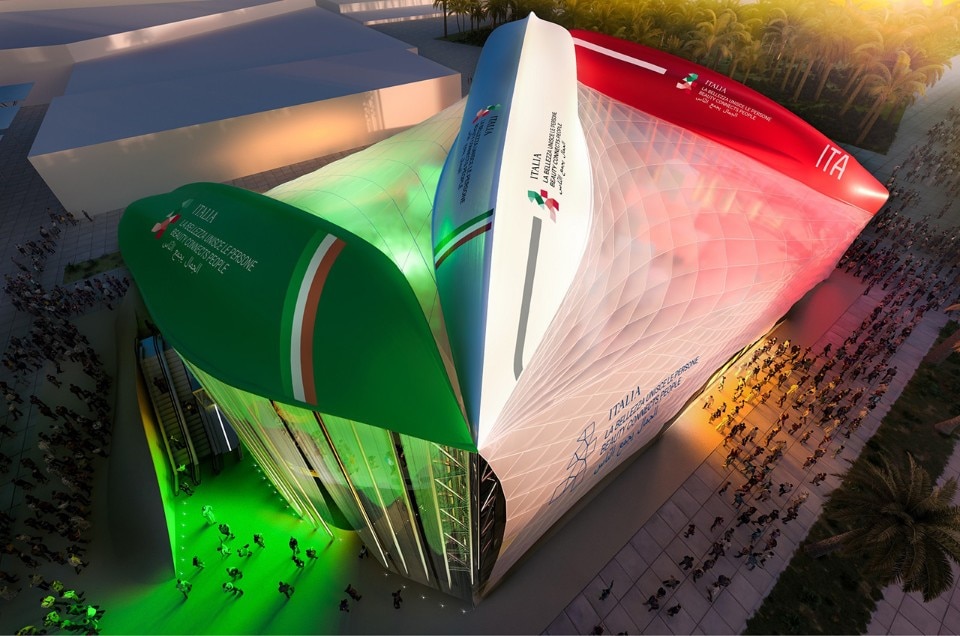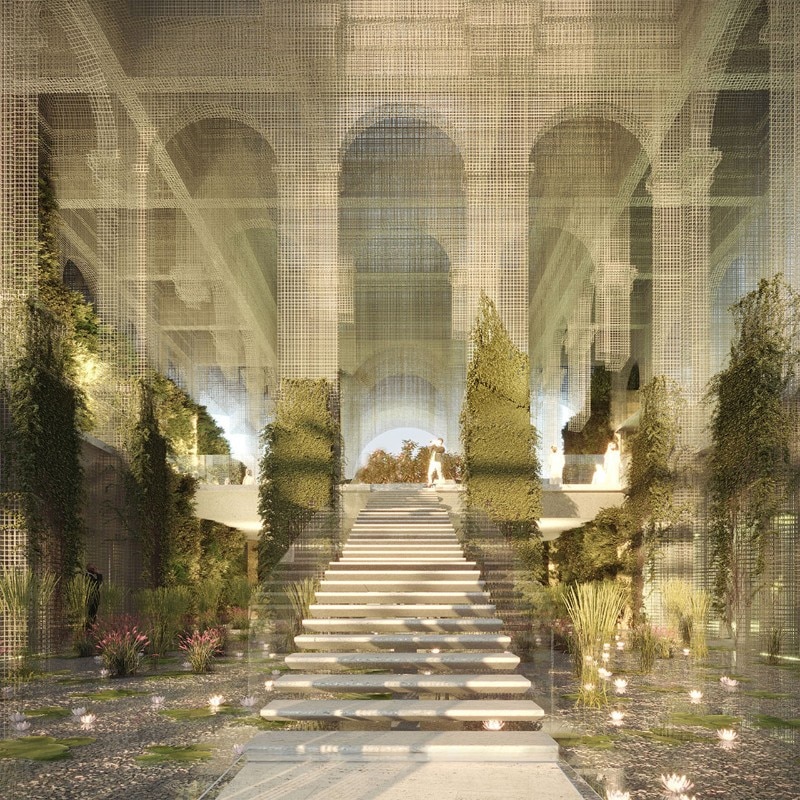A dark and stormy night, so any good tale begins. Will the night be stormy when the three Italian-made boats, the caravels of circular economics land in Dubai to be upturned and used as vaults for the Italian Pavilion at Expo 2020?

The week following the announcement of the winning project by Carlo Ratti, Italo Rota, Matteo Gatto and F&M Ingegneria (ahead of teams lead by Gianluca Peluffo, and Dodi Moss with artist Edoardo Tresoldi) was certainly tempestuous. The narrative of three capsized hulls – the only disclosed visual to powerfully reach the public – was given a stormy reception, and submerged mostly by critiques of the highest historical inconvenience. Representing by some upturned boats a country that has recently faced a period of harsh polemics concerning policies of closure to migration, implicitly and explicitly connected to several fatal shipwrecks in the Mediterranean, may surely result to many, in times of instant visual communication, as a proper communication stumble.
A Tower of Babel of incommunicability has risen out of the dust of a debate
A Tower of Babel of incommunicability has risen out of the dust of a debate consisting mostly of statements circulating on social media. The conversation blurred the borders between critique of design and critique of a communication concept. To be fair, the Italian-Italian nature of the architectural component of the debate has to be remarked. Still, something of a more general value comes out of the sands of Babel, the most formidable critical issue, at least for critics: it is highly difficult — if not plainly unnecessary — to make a properly architectural critique of such architecture.

The most persistent and powerful question is not directly exploring the form and images (very few of which are currently circulating) but centres on how such a short circuit could take place, within the actually predominating realm, at least in the case of this process: the realm of communication. The entire structure of this process, and the whole debate on its results, puts us in front of a major setback of space, in favor of pure communication (and the author would like to invite the audience to not activate those typical mechanisms aiming to shelve the discussion in between the sophistical quicksand of “what does ‘space’ mean?” and so on).
Talking about space, here, is not the same as talking about architecture as a professional identity: some very effective spaces have been conceived by people who were not trained in origin as architects — Olafur Eliasson, James Turell, Dan Graham to name a few. On the contrary, architecture as a self-referential disciplinary debate can only benefit in terms of renewal and enrichment from the continuous beatings it gets every day from market, planet, society, in a word: from reality. Talking about space means that the author has to confess to being an extemporary hooligan of the pure, experiential and not so unfeasible spatial dimension of Costantino Dardi’s proposal for the Osaka 1970 Expo: and whoever should argue that it is easy to endorse unrealised projects will surely be able to appreciate how the realised solution by Studio Valle was neither coward nor lacking a spatial programme at all.
Space seems to be a fugitive, everything becomes a narration of contemporary values
Fifty years later, space seems to be a fugitive, references made in the call to the figure of the Italian garden seem ineffective, everything becomes a narration of more or less contemporary values to be credited to the commissioner State.
It’s true architecture has always, or at least for a long time, been made of communication. True, recent decades witnessed the rise and success of positions stating that each architecture is first of all a symbol of something. True, even a little further back in time, the notion of caractère listed in the Encyclopédie was defined as the capability of a building to visually express its function and social role. True as well, it would be more correct to say the capability to spatially express those features, through disposition and proportion of its spaces and building elements.
The question then evolves: is the form of a pavilion, of a building with its insides, outsides, openings and closures, the most appropriate way at this point to convey the proposed message, to perform a function that could probably be performed as effectively – or even more – by a video or media interface? Maybe the ancestor to be summoned for a comparison is no longer Dardi’s system of spatial trusses, but the infamous Pyramid by Filippo Panseca – that cross-scalar and slightly intergalactic object hanging from the ceiling of Ansaldo plants in Milan in 1989, which projected both discourse and convention spaces of the then-triumphing socialist party out in the sphere of pure communication; an architecture made for communication. And an iconic sign as it was made of communication, not just in reason of the Italo disco revival currently reuniting the Old Continent.
Runners-up for Italian pavilion for Dubai Expo 2020, design by team lead by Gianluca Peluffo
It is space as a vector of experiences to be hitting rock bottom right now, the whole process is rooted in the realm of communication, encompassing all between the highly rhetorical requirements of this kind of competitions and the envisioned strategies for their fulfilment, i.e. the ceaselessly evocated references to past and beauty, and the narrative devices characterising the proposals. Those devices easily and quickly got the front row and reached a broader, and fortunately not only architectural, audience.
These being the conditions, both process and project escape the strictly architectural intellectual tools for analysis: the communication device of each project (the hulls and the circular architecture, the reprises of ancient Italian cityscape or the grace of its monuments) remains as its only core and statement, its only known aspect so far.
These being the conditions, when such devices generate those communicational short circuits laying at the base of current polemics, it gets hard to find other argumentations, as no help comes from the neglected realm of spatial elements.
It has basically become impossible to put forward architectural positions that can be shared also by non-insiders, and so it will be again and again unless discussions and comparisons are based on proposals made of experiential and functional programs with a concrete translation in spatial programs; spaces, in the end. That will probably be the moment when a common ground will be found again, a common language allowing everyone, builders, users, even reviewers of such huge Expotowers of Babel, to express and hopefully discuss something really new.
